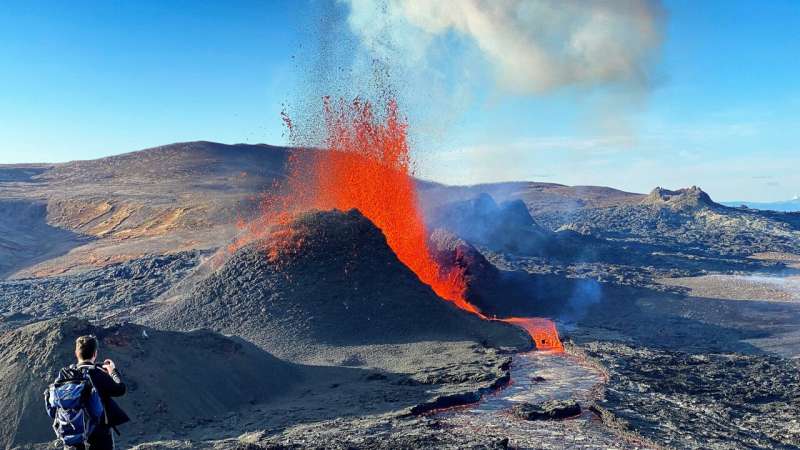Science
New Study Reveals Volcanic Pulses Reshaping East Africa’s Rift

Recent research has uncovered significant evidence of rhythmic pulses of molten rock rising beneath East Africa. This study, conducted by researchers from the University of Pisa and other institutions, enhances our understanding of volcanic activity and the processes that lead to the breaking apart of continents. The findings were published on July 20, 2025, and could have wide-ranging implications for predicting volcanic eruptions and earthquakes.
The Earth’s continents, while appearing fixed, have been shifting, splitting, and reforming for billions of years. More than 90 active volcanoes lie within the East African Rift Valley, a geological feature indicating that Africa is in the process of splitting apart. This rift is a critical area of study, as it may eventually lead to the formation of a new ocean over the next few million years.
Afar, located at the northern end of the East African Rift, is particularly noteworthy. It is the meeting point of three rifts: the Red Sea Rift, the Gulf of Aden Rift, and the Main Ethiopian Rift. The Red Sea Rift has been expanding for approximately 23 million years, while the Main Ethiopian Rift has been active for about 11 million years. These rifts provide a rare opportunity to study different stages of continental breakup simultaneously, as they remain exposed rather than submerged under water.
Scientists have long theorized the existence of a mantle plume beneath the Afar region, a structure composed of unusually hot mantle material. The recent study confirms this plume and reveals that it rises in pulses, each with distinct chemical compositions. Researchers analyzed over 130 lava samples from the Afar rock repository and through fieldwork, focusing on Holocene eruptions, which are rocks less than 11,700 years old.
The research indicates that these mantle pulses flow at different speeds beneath the tectonic plates, correlating with the varying rates of rifting in the area. The Red Sea Rift and Gulf of Aden Rift expand at approximately 15 millimeters per year, while the Main Ethiopian Rift moves at around 5 millimeters per year. This disparity suggests that volcanic activity may be more concentrated in the faster-moving rifts, though eruptions in these areas might be less explosive compared to the more mature volcanoes of the Main Ethiopian Rift.
Understanding the dynamics of mantle plumes and their relationship to tectonic activity is crucial for interpreting volcanic and earthquake events. The study highlights the importance of regional geological characteristics, which can influence the frequency and intensity of eruptions.
As researchers continue to investigate the links between continental rifting and mantle plumes, the insights gained may help us better predict volcanic activity and improve our understanding of Earth’s geological history. The findings underscore the complexity of geological processes and the need for ongoing research in this field.
-

 Health3 months ago
Health3 months agoNeurologist Warns Excessive Use of Supplements Can Harm Brain
-

 Health3 months ago
Health3 months agoFiona Phillips’ Husband Shares Heartfelt Update on Her Alzheimer’s Journey
-

 Science2 months ago
Science2 months agoBrian Cox Addresses Claims of Alien Probe in 3I/ATLAS Discovery
-

 Science2 months ago
Science2 months agoNASA Investigates Unusual Comet 3I/ATLAS; New Findings Emerge
-

 Science1 month ago
Science1 month agoScientists Examine 3I/ATLAS: Alien Artifact or Cosmic Oddity?
-

 Entertainment5 months ago
Entertainment5 months agoKerry Katona Discusses Future Baby Plans and Brian McFadden’s Wedding
-

 Science1 month ago
Science1 month agoNASA Investigates Speedy Object 3I/ATLAS, Sparking Speculation
-

 Entertainment4 months ago
Entertainment4 months agoEmmerdale Faces Tension as Dylan and April’s Lives Hang in the Balance
-

 World3 months ago
World3 months agoCole Palmer’s Cryptic Message to Kobbie Mainoo Following Loan Talks
-

 Science1 month ago
Science1 month agoNASA Scientists Explore Origins of 3I/ATLAS, a Fast-Moving Visitor
-

 Entertainment2 months ago
Entertainment2 months agoLewis Cope Addresses Accusations of Dance Training Advantage
-

 Entertainment3 months ago
Entertainment3 months agoMajor Cast Changes at Coronation Street: Exits and Returns in 2025









